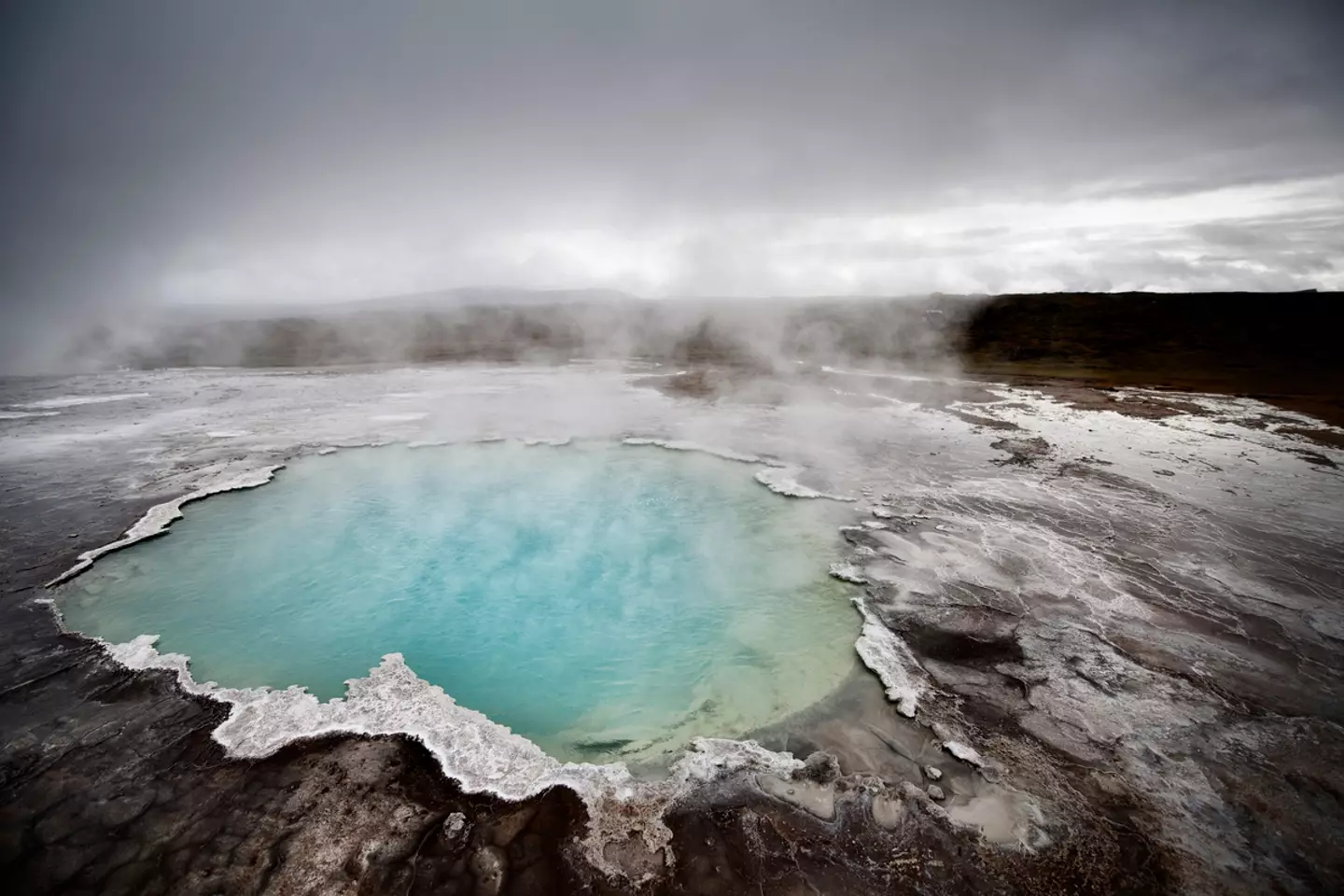There are a number of dangers around the method of ‘hot-potting’ that should be noted by the public after a man was dissolved in an acidic hot spring.
Colin Scott tragically died in 2016 while visiting the Porkchop Geyser in Yellowstone National Park, which is located in the US states of Montana, Idaho and Wyoming.
He was with his sister, Sable Scott, and the pair ignored warning signs before heading to a prohibited area of the park for an illegal swim.
According to deputy chief ranger, Lorant Veress, the pair were looking for a spot to ‘hot pot’, as per The Guardian.
However, while videoing her 23-year-old brother search for the perfect spot, Colin slipped and fell into the scorching water, which boiled him alive.
The acidic water dissolved his body, leaving just his shoes and wallet – with the incident caught on Sable’s phone, as well as her attempt to save him.
Police have kept the video footage under wraps following the incident.
After Sable ran to a nearby museum for help, it was too late as bits of Colin’s head, torso and hands were found floating in the hot spring.
The hot spring was said to reach temperatures up to 100 degrees celsius, with the police report at the time stating: “Due to the report of the individual not previously visible, a lack of movement, suspected extreme temperatures, and indications of several thermal burns, the subject was determined to be deceased.”
Are hot springs safe?
Despite this, swimming in hot springs is generally safe, as it has been done for many generations, with the ancient Greeks and Romans being among the first to enjoy the health benefits of ‘hot potting’, the act of sitting in a heated, mineral-rich body of water, as per Everyday Health.
Of course, this depends on the temperature of the water, with Mother Nature largely in control of this – it’s worth checking before getting into an unverified body of water.
Colin sadly fell into a boiling hot spring and died. (Colin Scott/Facebook)
What should you do before hot potting?
Primary care naturopathic physician Marcus Coplin, ND, also the director of hydrothermal medicine for the Balneology Association of North America, explains the risks of ‘hot potting’ in natural or controlled temperature springs.
He starts by saying that if you have a health condition, you should contact your GP before doing anything that could affect your long term well-being.
There are numerous health benefits, such as helping with skin conditions, de-stressing and reducing pain, but what are the risks?
Risks of hot potting
Firstly, if you’re pregnant, you should limit your time hot potting to under 10 minutes.
If you have an open wound, you should wait until it has healed before getting into the mineral-rich waters, Coplin advises.
Those with diabetes, seizure disorders, narcolepsy or fainting disorders are more likely to get injured or drown in the hot springs, so checking with a doctor is crucial.
If you’re visiting a controlled facility, it’s worth asking how they clean their pools and how they test the waters for cleanliness and safety as the presence of bacteria and parasites can be a concern.

There are some serious risks of hot potting. (Getty Stock Photo)
Life-threatening dangers of hot potting
Like the Porkchop Geyser in Yellowstone National Park, there are areas where hot potting is forbidden for a reason.
It is often where the thermal waters reach boiling temperatures (above 100 degrees celsius), as Yellowstone National Park says that more than 20 people have been killed by some of their geysers and hot springs in the past, from people either purposely disobeying the rules or slipping into a boiling, acidic geyser.
Safety around these areas is paramount to save lives.

